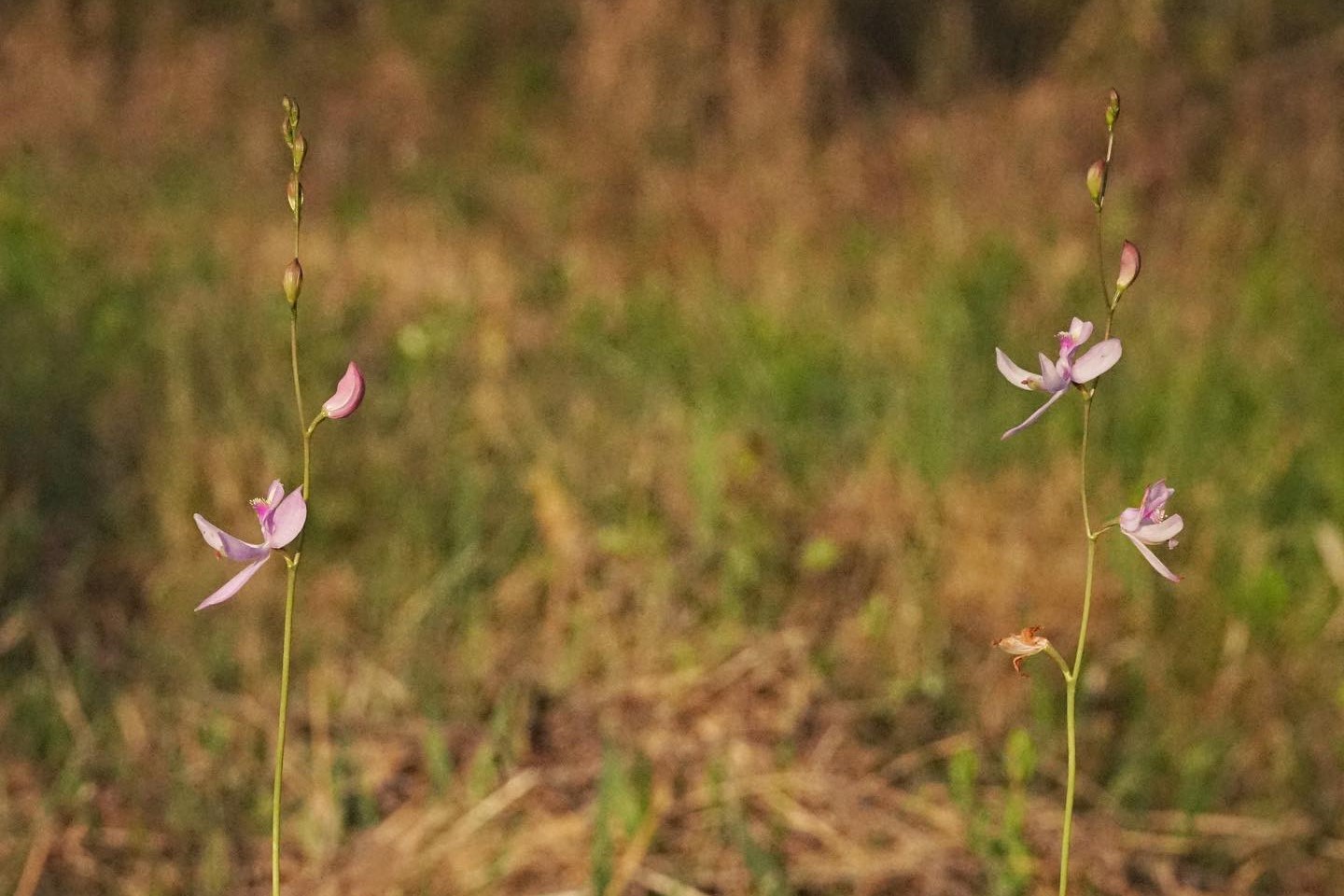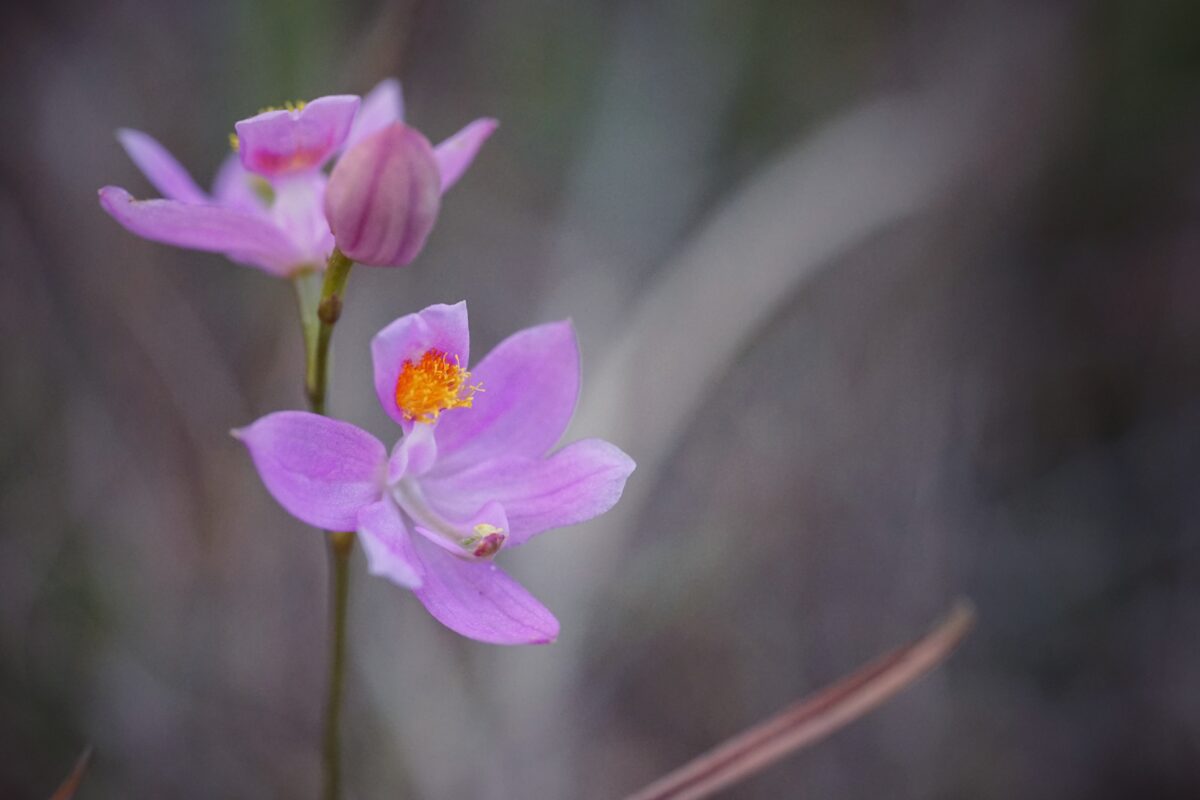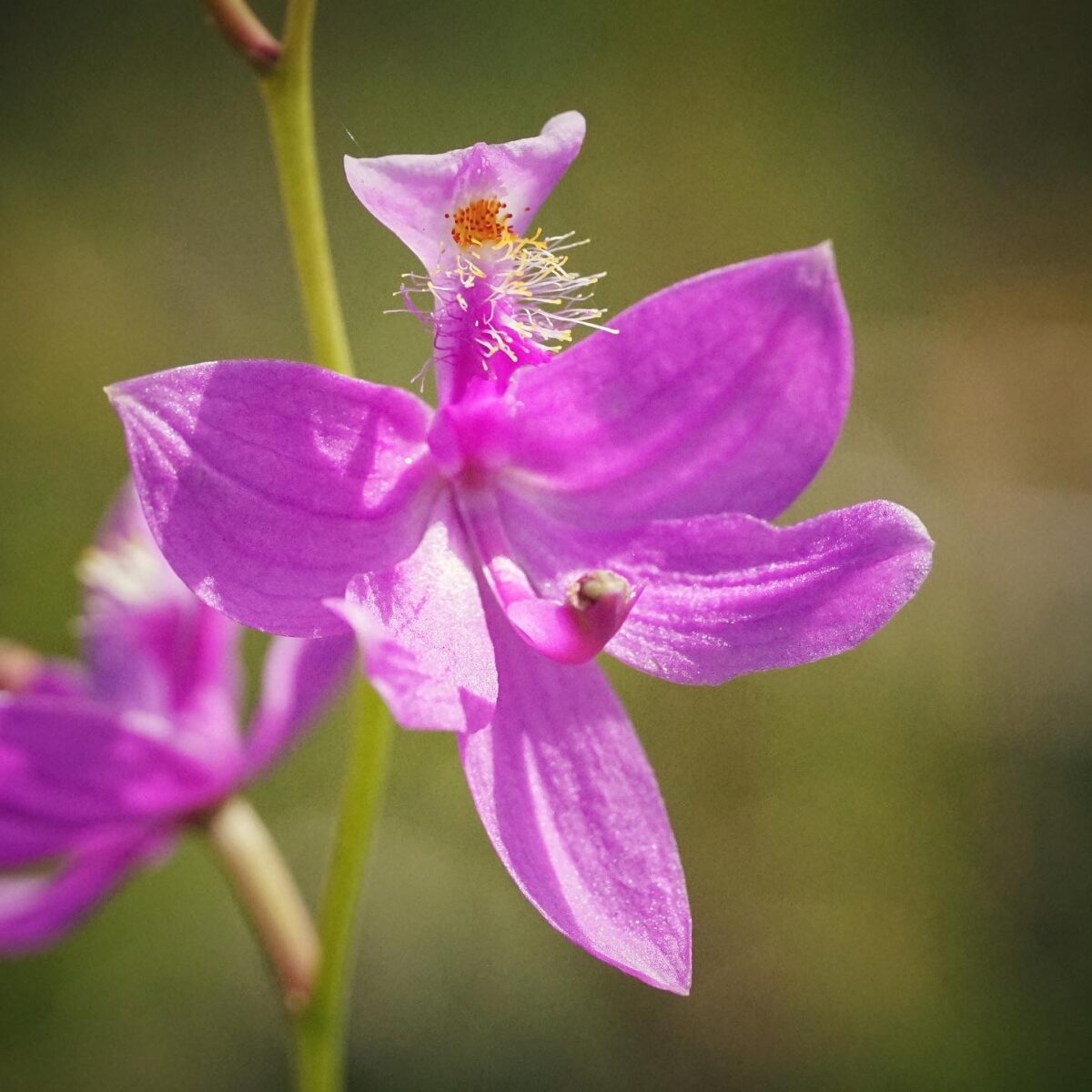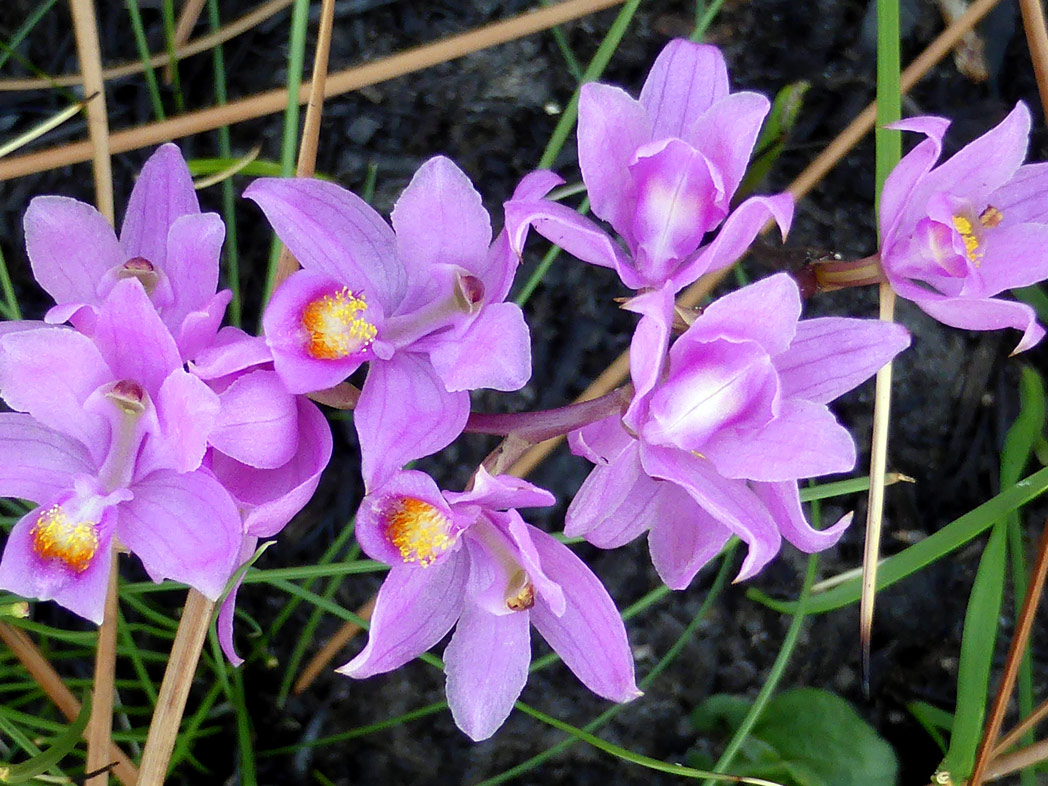Pale grasspink
Pictured above: Pale grasspink (Calopogon pallidus) by Eleanor Dietrich. Click on terms for botanical definitions. View post as a PDF.
Pale grasspink (Calopogon pallidus) is a terrestrial orchid that occurs naturally in bogs and wet flatwoods, prairies and roadsides. It shares the same bloom time (spring into summer) and habitat as its cousin, tuberous grasspink (Calopogon tuberosus), but can be distinguished by its flowers, which are smaller, paler, and have reflexed sepals.
Pale grasspink’s flowers may be white to pale pink to deep purplish-pink. Petals are broadly lanceolate and falcate. A labellum (liplike petal) occurs on the top of the flower (not the bottom where it occurs in most genera) and bears a tuft of yellow stamen-like bristles. Sepals reflex forward and may be wavy. Leaves are basal, grasslike and usually absent once flowering begins. Seeds are born in capsules.
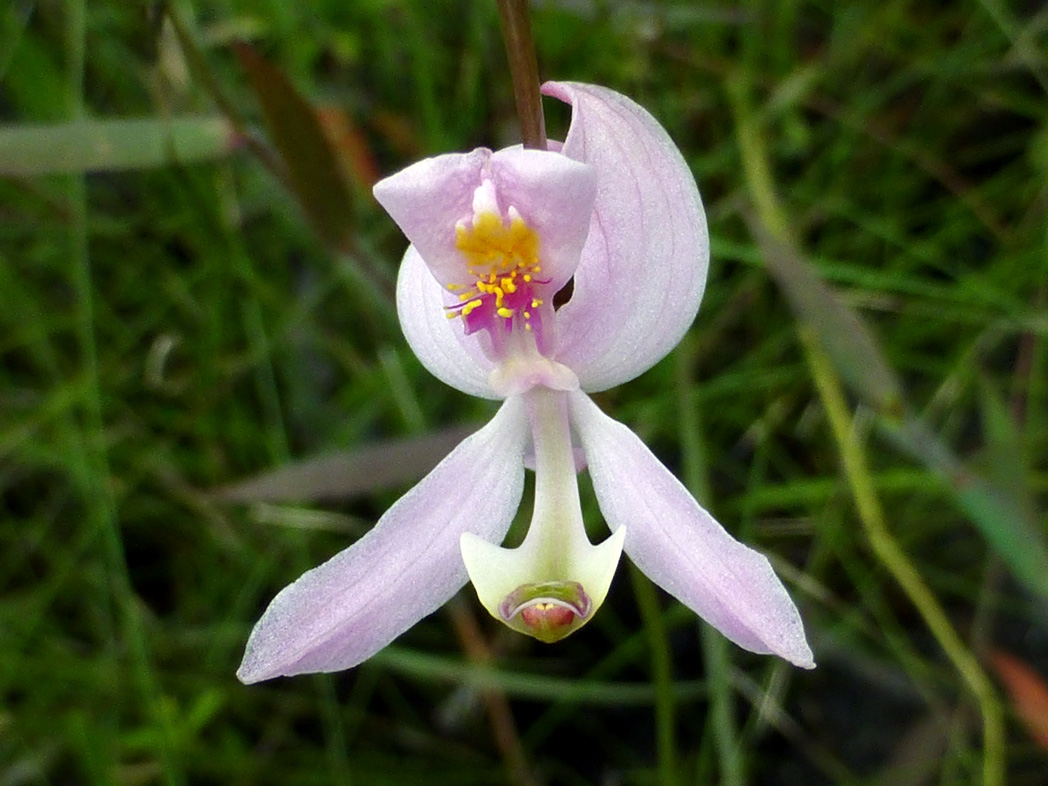
The pollination process of the Calopogon genus is unique. The stamen-like bristles that form on the lip are designed to attract pollinators, but they offer no nectar or pollen. Instead, when a bee lands on the hairs, the lip swings down and loosely traps the bee, forcing it to crawl out across the reproductive parts. Pollen is then deposited on the bee; if the bee is already carrying pollen, it will make contact with the flower’s stigma and (hopefully) pollinate the flower.
The genus name Calopogon is from the Greek kalos, or “beautiful,” and pogon, or “beard.” It refers to the tuft of hairlike structures on the flower’s lip.
Family: Orchidaceae (Orchid family)
Native range: Jefferson County west to Escambia County; Baker and Nassau south into Collier and Broward counties
To see where natural populations of pale grasspink have been vouchered, visit florida.plantatlas.usf.edu.
Lifespan: Perennial
Soil: Moist to inundated acidic soils
Exposure: Full sun
Growth habit: up to 2’ tall
Pale grasspink is not commercially available. It is best observed in its natural environment.
Learn more about Pale grasspink from the Institute for Regional Conservation.
For more information on other Calopogon species, see these resources:

